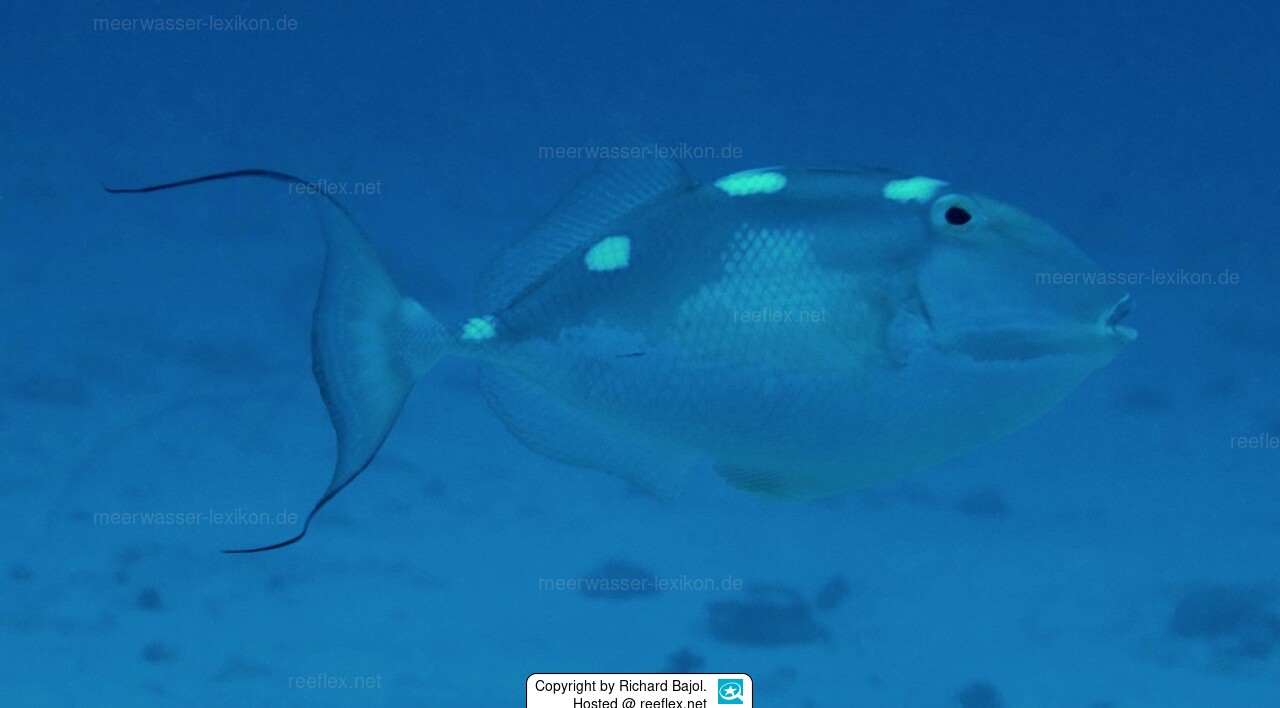Info
Very special thanks for the frist photo of Abalistes filamentosus to Richard Bajol and Alain Daoulas!
Abalistes filamentosus is considered a rare or uncommon species, this assumption is probably based more on the water depth, which divers usually can no longer reach without danger,
The triggerfish inhabits mud and silty sand bottoms.
Adults live on deep coastal slopes and usually swim high above the bottom, sometimes in estuaries.
Juveniles occur in sheltered coastal bays and estuaries with outcrops of boulders or debris on open substrates.
Distinctive features of Abalistes filamentosus include the namesake long, dark brown filaments at both tips of the caudal fin and three large white spots on the back and a smaller white spot at the base of the caudal fin.
The body of the triggerfish is mottled dark brown, and the ventral half is pale or white.
The dorsal and anal fins are pale with 4-5 horizontal brown wavy lines, the base of the soft dorsal fin is dark brown, but the base of the anal fin is white;
The base of the caudal fin is dark brown dorsally, white ventrally; the caudal fin is brown or yellowish brown, paler distally with 3 - 4 vertical brown wavy lines;
The species was named "filamentosus" because of the filamentous rays in the caudal fin.tes filamentosus
Abalistes filamentosus is considered a rare or uncommon species, this assumption is probably based more on the water depth, which divers usually can no longer reach without danger,
The triggerfish inhabits mud and silty sand bottoms.
Adults live on deep coastal slopes and usually swim high above the bottom, sometimes in estuaries.
Juveniles occur in sheltered coastal bays and estuaries with outcrops of boulders or debris on open substrates.
Distinctive features of Abalistes filamentosus include the namesake long, dark brown filaments at both tips of the caudal fin and three large white spots on the back and a smaller white spot at the base of the caudal fin.
The body of the triggerfish is mottled dark brown, and the ventral half is pale or white.
The dorsal and anal fins are pale with 4-5 horizontal brown wavy lines, the base of the soft dorsal fin is dark brown, but the base of the anal fin is white;
The base of the caudal fin is dark brown dorsally, white ventrally; the caudal fin is brown or yellowish brown, paler distally with 3 - 4 vertical brown wavy lines;
The species was named "filamentosus" because of the filamentous rays in the caudal fin.tes filamentosus







 Richard Bajol, Neukaledonien
Richard Bajol, Neukaledonien


